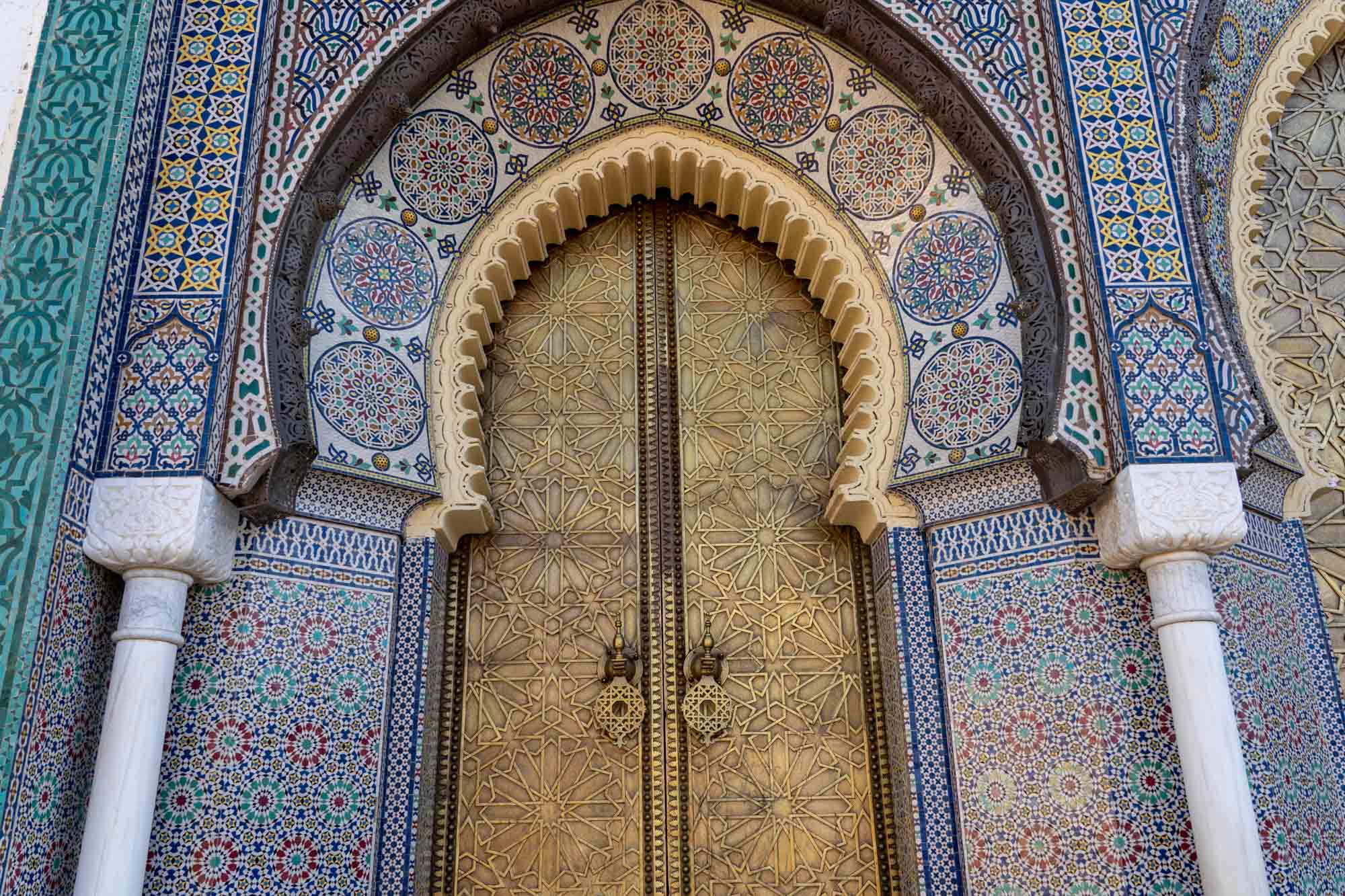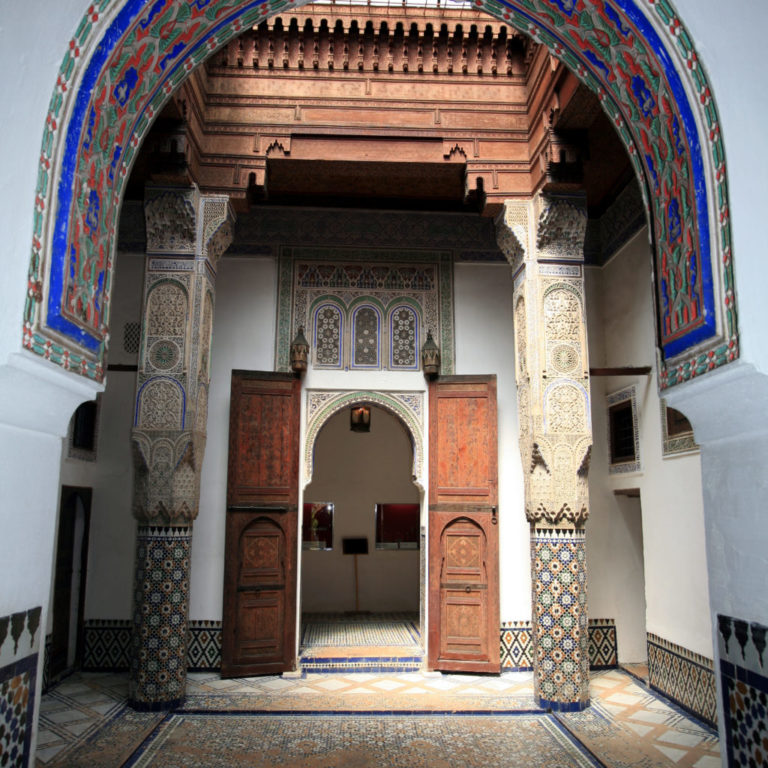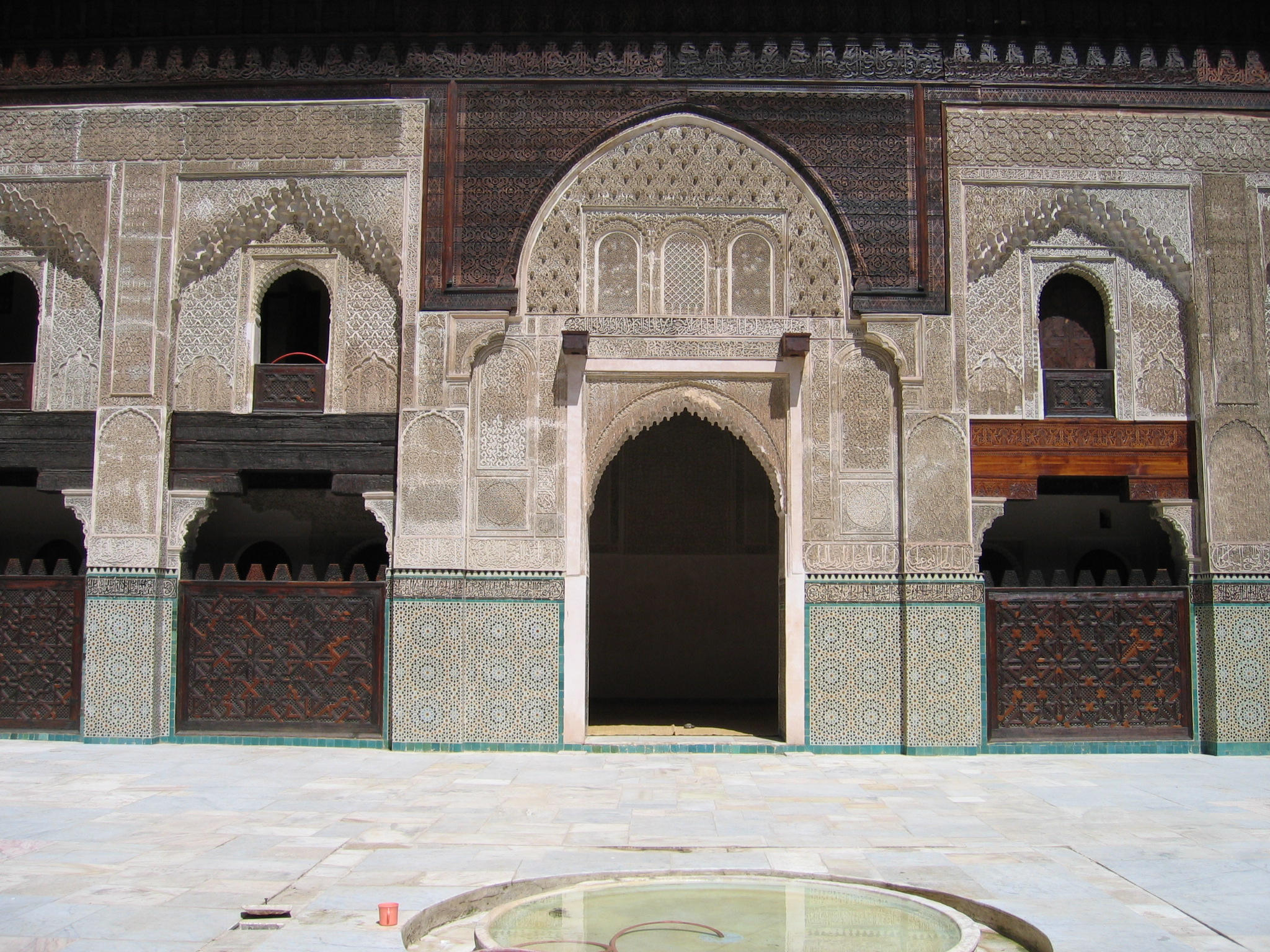Meknes is above all a wall and monumental doors, like those of Bab Mansour. Nicknamed “the city of a hundred minarets”, because of its many mosques, one can also see the remains of the former royal palace, the mausoleum of Moulay Ismaïl, or the museum Dar Jamaï, transposed in a sublime residence style Andalusian, dating from 1881.

Also known as the “Jamaï House”, this beautiful palatial residence was once the residence of Sultan Hassan’s grand vizier, and perfectly illustrates the lifestyle of the great Moroccan families of the late nineteenth century. It includes all the rooms used at the time, namely rooms, reception rooms, a pond and gardens, a mosque, a Moorish bath, a foundouk (accommodation for passing merchants), and other living rooms. Today renamed the Museum of Indigenous Arts, the rooms are now used as showrooms dedicated to Moroccan know-how and crafts: ceramics, embroidery, pottery, painted and carved wood, pottery, weaving … Before being converted into a museum, the palace also served for a short time, military hospital under the French protectorate.

In Arabic, a madrassah is a Koranic school, a theological university where the religion of Islam is taught. The Bouaanania medrassa of Meknes is the largest in the city but also one of the most beautiful in the country, located in the center of the medina, a few steps from the Museum Dar Jamaï. The treasure of the Mérinides era, its traditional architecture consists of carved cedar wood, blue and green mosaics, and moucharabiehs, a real spectacle for the eyes! Today, the madrassah is open to the public, both Muslim and non-Muslim, for only a few dirhams. Nice to see, the small rooms that served as dormitories for students!
